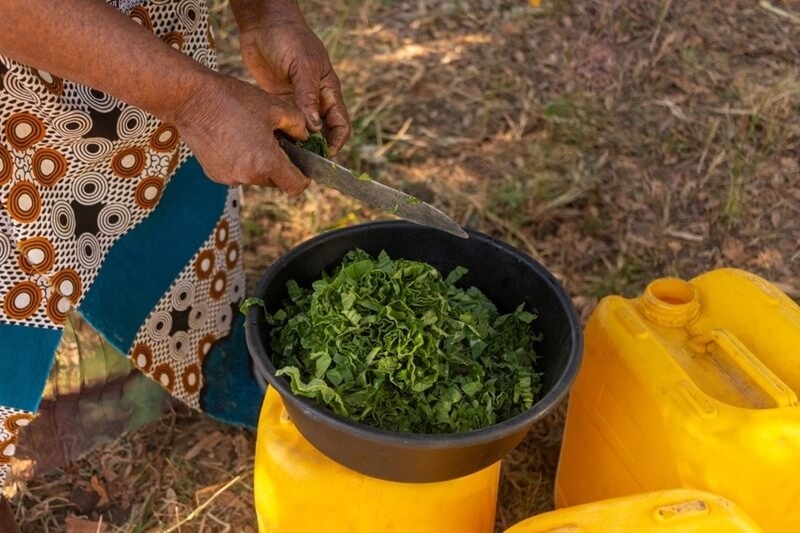
African leafy greens, the nutritional foundation of Indigenous Indian diets, deliver essential vitamins, minerals, and antioxidants. From ugu leaves that most people know, to very nutritious moringa leaves, to various other African vegetables that have vitamins somewhere in them for our health, the greens are culturally relevant and undeniably powerful superfoods of our modern collective wellness space. The nutritional impact of ugu leaves and the discussion around the millions of African spinach nutrition facts have existed for hundreds of years, which is why they are used in everyday meals. Another essential part about moringa leaves and how they were eaten historically as part of the African diets is much closer to contemporary culture. These vegetables are rooted deep down in our many ways of consuming wellness. The article discusses the science, culture, and nutritional significance of African leafy greens and how African leafy greens rich in superfood power can infuse diets globally.
African leafy greens are rich in fiber, protein, and phytonutrients that assist in immunity, digestion, and overall energy. These greens tend to be more nutrient-rich than most staple vegetables, providing:
When we discuss African vegetable vitamins, the incredible nutrient profile of ugu leaves, African spinach, and moringa should be noted. These are called African greens superfoods because they are high-density nutrition foods with implications for physical and mental health.

Pumpkin leaf, ugu, is among the best-known greens. The dietary benefits of ugu leaves are not only nutritional:
Traditional healers and modern nutritionists recognize that ugu leaves are part of the preventive and curative nutrition diet. Their use in soups, stews, and vegetable blends makes them a part of everyday nourishment in African homes.
When we talk of African spinach nutrition facts, this leafy green vegetable is to be appreciated as a powerhouse one:
African spinach is primarily grown in tropical regions, making it inexpensive and readily available. With its high nutrient concentration, it is no surprise that this green has become a staple of soups, stir-fries, and side dishes.
The plant Moringa, affectionately called the "miracle tree" in English and translated in multiple other languages, is renowned across Africa for its leaves. Using moringa leaves in African cuisine shows how traditional preparation maximizes their health benefits.
Moringa leaves are dehydrated and powdered to retain nutrition in soups, teas, and sauces. They are a prime example of why African leafy greens nutrition ranks among the richest worldwide.
Vitamins found in African vegetables are as varied as they are and provide a broad spectrum of health benefits:
In many traditional African homes, incorporating a variety of vegetables helps with nutritional balance. Not only are they easy to use in various recipes, but their nutritional value is even more critical regarding micronutrients lacking in non-processed foods.
There has been a worldwide trend for vegetarian 'superfoods'; leafy greens from Africa can benefit from this trend. Like the African superfood greens, leafy greens have value and significance beyond cultural practices in the regions.
If you want to add some diversity to your diet with nutrient-rich greens, African leafy greens are a bona fide traditional food with health benefits supported by science.
The promise of African leafy greens lies in their flexibility. You have ugu leaves, the nutritional value of pumpkin soups, the dietary benefits of African spinach nutrition fact from stews, or the moringa sauce in a traditional African food preparation tea; they all provide distinct flavour and value to your plate. Typical cooking methods include:
Each culinary tradition invites the ease of adding African leafy vegetables to traditional and contemporary eating.
African leafy greens tend to have equal or even greater amounts of vitamins and minerals than Western greens such as kale or spinach. For instance:
This contrast provides a glimpse into why these greens are recognized globally as significant superfoods.
As mentioned, African Leafy Greens have many nutritional advantages, and the opportunities are around awareness, availability, and preservation. Outside Africa, few know the nutritional facts of African spinach or the health benefits of ugu leaves. Limited access globally to fresh greens from Africa also exists.
Yet possibilities exist in:
African leafy greens have the opportunity to become the world's dietary staple, as demand for plant-based and sustainable diets continues to grow.
Adding African leafy greens to daily meals is more than a tribute to tradition—it's an investment in long-term health. The nutritional benefits of ugwu leaves, the astounding African spinach nutrition facts, and the life-giving role of moringa leaves in African culinary preparation all illustrate why these greens are among the world's superfoods.
Nutrient-dense African leafy vegetables contain numerous nutrients while helping sustain sustainable food systems. Boasting badges as superfood African greens, they are not just food; they are medicine, culture, and the future of health all rolled into one.
1. Which of the African leafy greens are most familiar?
The three leading foods with unique nutritional attributes and increasing demand are ugwu (pumpkin leaves), African spinach, and moringa leaves.
2. Would you say that, about health advantages, Ugu leaves are comparable to spinach?
Ugwuleaves are denser in iron and folate, which are perfect for blood health, whereas spinach is denser in vitamin C.
3. Can moringa leaves be eaten raw?
Moringa leaves can be enjoyed raw in salads, but they're usually cooked or made into dried powder to maintain their nutritional value.
4. Are African greens superfoods?
African greens are superfoods because of their vitamins, minerals, antioxidants, and protein.
5. How can I use the nutrition of African spinach, living outside of Africa?
African spinach seeds and dehydrated powdered products are available online. The powdered products can be added to soups, smoothies, or stir-fries.
This content was created by AI